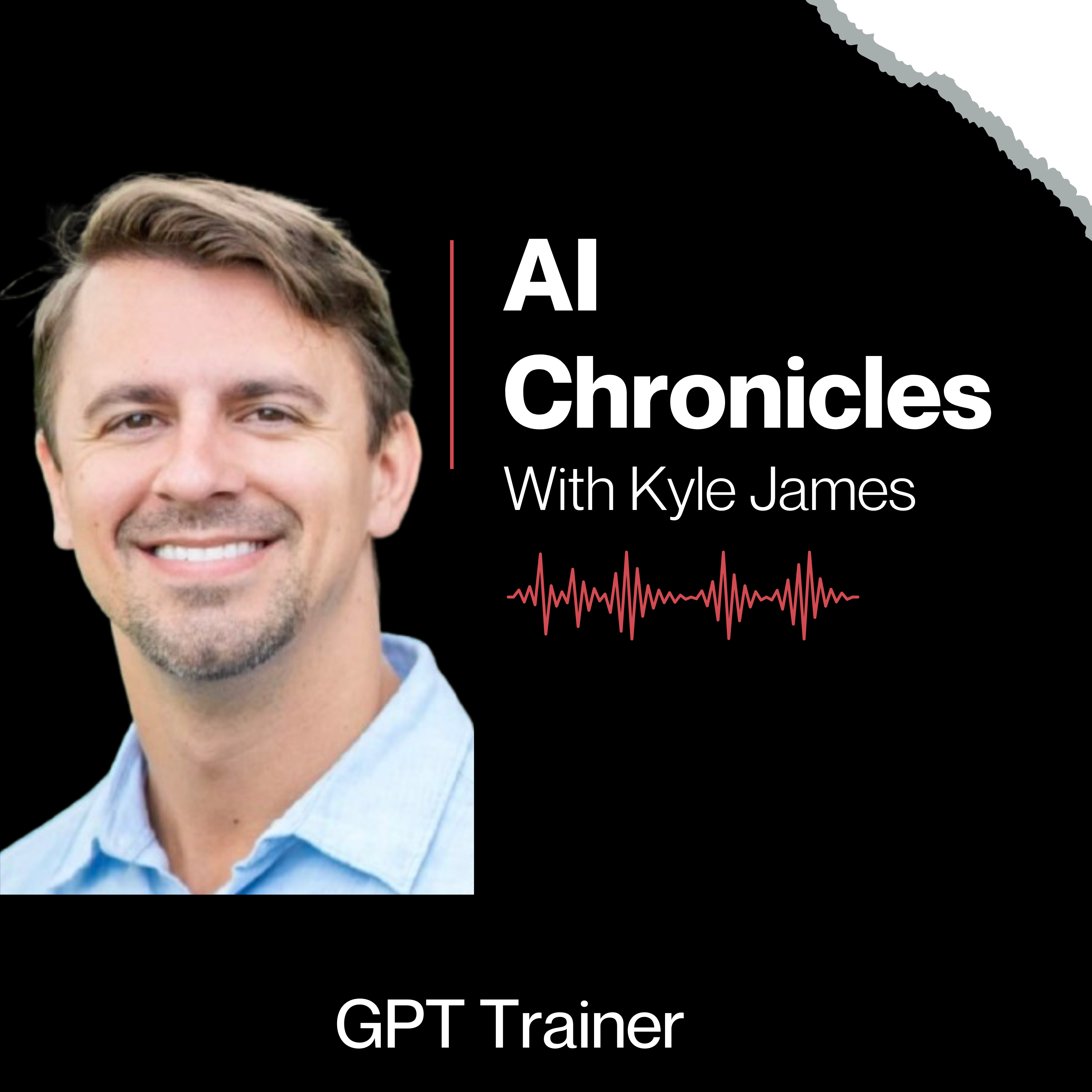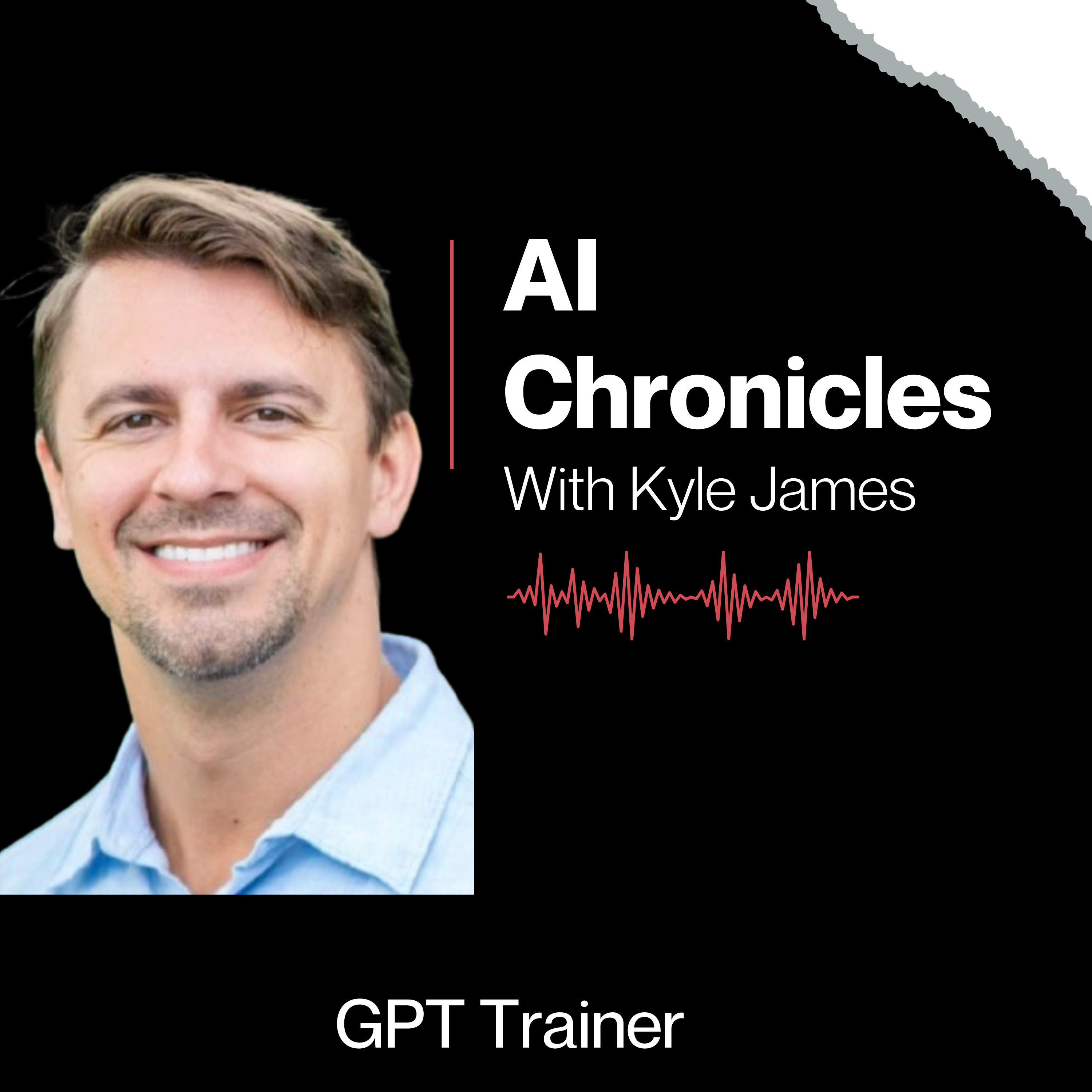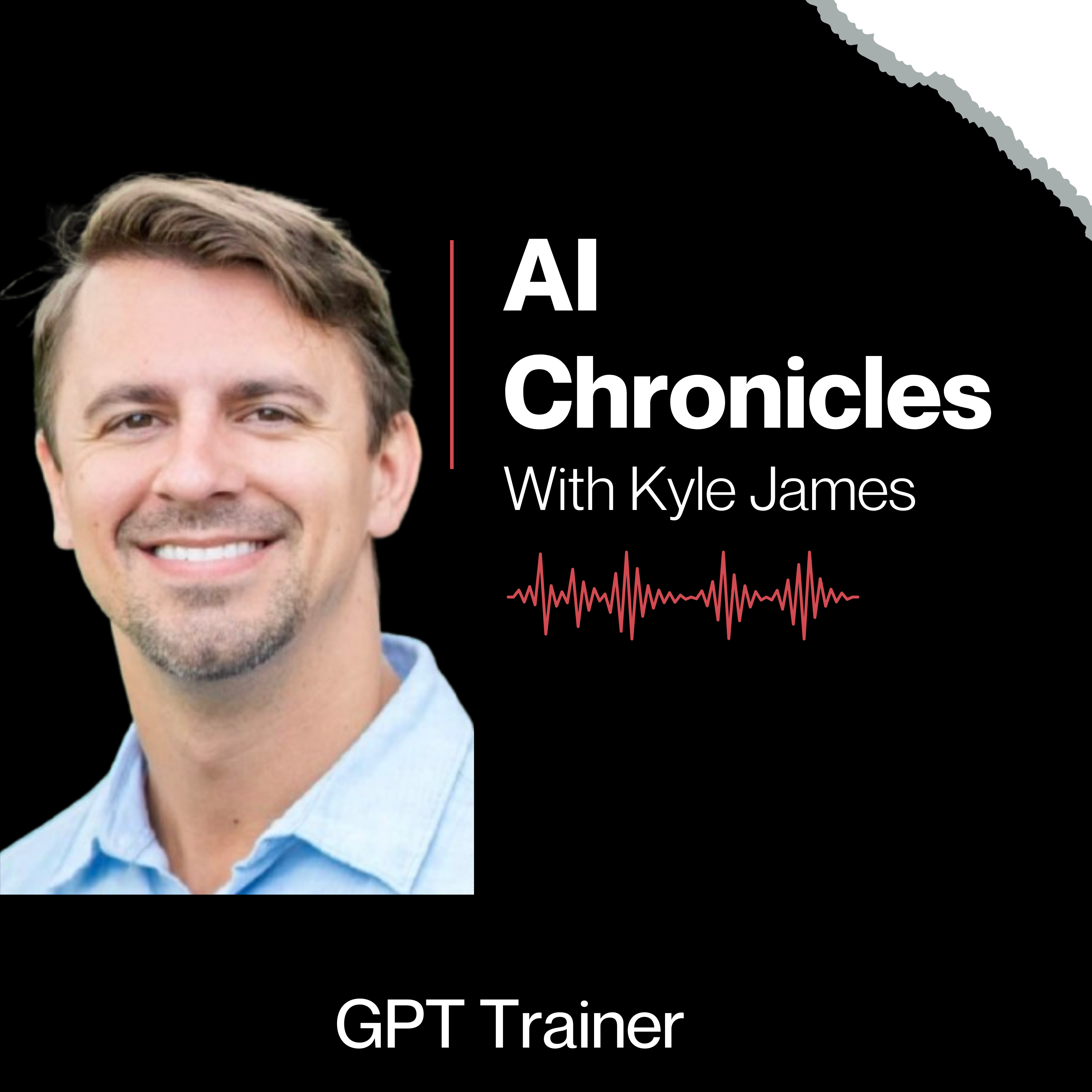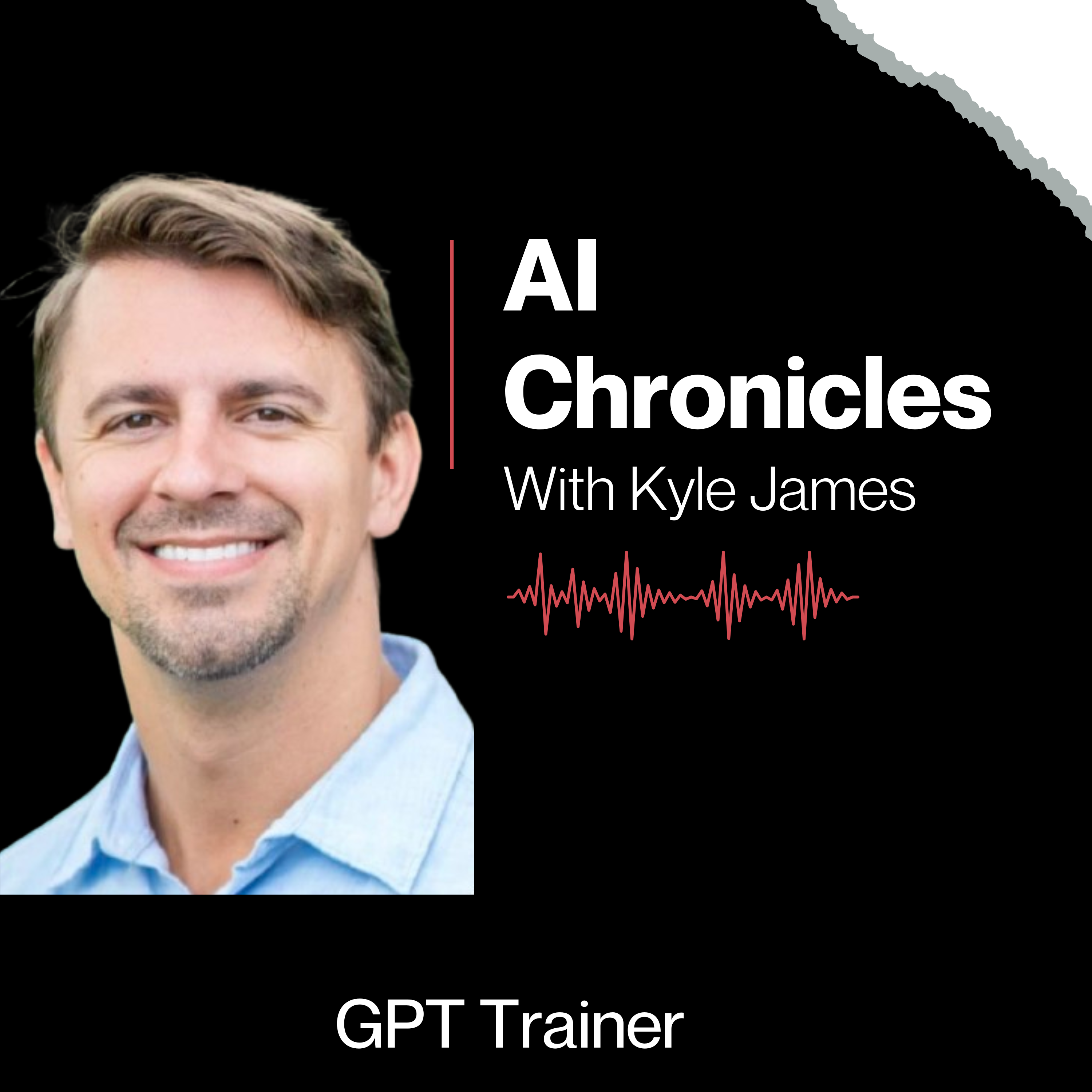Episode Transcript
Kyle James (00:00.97)
Hey, welcome to the as Chronicles podcast. I'm your host Kyle James. And today we'll be diving in headfirst into how a software company called TrueView is using AI inside of their own business to help reduce churn through advanced AI analytical prediction. And we'll share the exact steps that you can use in order to implement AI for yourself. Now, before I dive into that, listen closely. Are you looking to implement AI inside of your own company or just struggling to get AI to stop hallucinating? Speak to GPT trainer.
GPT trainer literally builds out and manages your AI agent for you, eliminating hallucinations for good. Go to gpt-trainer.com. I promise you it'll be the biggest time saving decision that you've made all year. Trying to set up AI on your own is like trying to build a house from scratch. Sure, you could do it, but the time and frustration that's going to take you to get it finished just isn't worth it. It's a thousand times faster and safer to hire professionals. Schedule consultation today. Once again, that's GPT.
Say hi with me, Alyssa Nolt, is the CEO of TrueView and host not of just one, but two podcasts, Taking Back Monday and The Growth Signal. Hey Alyssa, welcome to the show.
Alyssa Nolte (01:13.55)
Hey, thanks for having me. I'm glad to be here.
Kyle James (01:16.21)
Awesome. Super excited for the conversation. So tell us a little bit more, like what's the, what's the origin story behind TrueView and like, how did it come to be?
Alyssa Nolte (01:23.628)
Yeah, I often tell people that I kind of stumbled into entrepreneurship. When I was about to graduate college, I had multiple job offers on the table. And one of those offers was for a pre-revenue startup. They couldn't pay me. There was no benefits. I was 100 % commission based only. So I did what every college student would do. And I took the unpaid full time gig right out of college.
Kyle James (01:46.013)
Yeah.
Alyssa Nolte (01:47.374)
But it really set me on a path to be open to discovery and to see how things change. And that's why I tell that story is because TrueView actually goes all the way back to 2013 when I joined this small research startup. We were studying behavior and psychology and how people make buying decisions when it comes to whether they're purchasing a software, shopping in the grocery store, or voting for a political candidate.
And so I spent the last year understanding how do people make those decisions? What kind of levers can we pull to move them in one direction or another? And how can we take them from, hey, I'm interested to I'm ready to buy as quickly as possible. This is a very expensive research process. We've worked with huge brands with unlimited budget like Salesforce and Cisco and JP Morgan Chase. And TrueView was really born out of my hope that we can find a way to in this age of AI.
take everything we've learned about how people make decisions and put it in the hands of people who don't have Salesforce level budgets.
Kyle James (02:51.498)
Yeah, absolutely. And so like you mentioned AI sir, seems like you're using a little bit AI over at TrueView. Like tell me like what exactly, you know, when did you start using AI within TrueView and like, why did you start using it in the first place? And like, what types of challenges were, were you trying to solve?
Alyssa Nolte (03:09.538)
The good news is that AI as a concept is not necessarily new, right? Like machine learning and neural networks have been around for a really long time. It's just getting to the point where it can be in the hands of someone who isn't a technical researcher or a data scientist. So we're really using AI to help you vacuum in large swaths of data, figure out what is actually relevant to your decision making.
and what's just noise. And that was something that we used to do by hand with a team of data scientists. It would be very expensive and no one could afford it unless you, like I said, were those really big household brands. With AI, there's almost a democratization of the ability to do those things without having to have these insane budgets or in-house teams or unlimited time to parse through all of your data. And so when we're using TrueView,
Our goal here is to help you connect with all of your data and make sure that you understand what's relevant, what's noise, and how to ensure that your AI is as good as your data source.
Kyle James (04:15.614)
Yeah. So like some of the clients that you've been like working with and, you start working with them and like they, they, they give you some data that they're working with. Like walk me through, like how, how exactly is the AI, working step by step and like, what does that process look like on the backend that you're, that you're doing?
Alyssa Nolte (04:32.684)
Yeah, so we are primarily a primary research firm. So when you think about that kind of old school focus groups and surveys and those kinds of things, we send out thousands and thousands of surveys every single month and all of that data has to come back in. And that's great. You can do a survey. You can parse through your data. You can try to figure it out. The piece that AI connects is actually making sense of what you're seeing. So it's not just
Hey, this data tell is this data saying the sky is blue, right? But the, AI component of it is, and what does that actually mean for my business and my ability to make decisions? And so we're kind of treating our AI integration, like this is your customer intelligence sidekick. Because the goal here is to make sure that you have access to insights and information and you don't have to spend all of your time just trying to parse data and dashboards.
Kyle James (05:29.556)
Yeah, absolutely. Cause like talking like data scientists, like especially cause you know, like I have talked to data, data analytical and like they'll, they'll bring like the numbers and they know the numbers and like it's getting that percentage of the data scientists who can actually convert over what the data says to like, here's how you, what you need to do in your business. And I think that's the biggest like translator piece though. So for you to be able to say like, Hey, it's the almost like, guess a bit of an advisor to go, okay, here's the data, like,
What do you do next with that data?
Alyssa Nolte (06:01.31)
One of the things I challenge my team pretty regularly is to answer the question, so what, who cares? Right? It is great that you're bringing me this information, but so what and who cares? And not meant to be passive aggressive, but like the intent here is you can't tell me the how, don't even tell me the why, tell me the what it means for me and what's in it for me so that I can move forward and make a smart decision.
Kyle James (06:07.478)
Mmm. It's really good.
Kyle James (06:13.258)
Hmm sure of course of course
Alyssa Nolte (06:27.874)
And I think that is actually a really big challenge for technical people. I don't consider them, I sit at like the intersection of technical and non-technical. But when I get a researcher for the first time, they want to take me through all of the process that they followed, the methodology that they're using and how they made all of those connections and all of the steps that they took to arrive at their conclusion, and then they present me the conclusion.
Kyle James (06:31.734)
Hmm.
Kyle James (06:35.359)
Yeah, yeah, yeah.
Alyssa Nolte (06:52.618)
I need them to go the other way. Present me the conclusion and then if I need you to back it up, you can back it up. And that's one of the things we're using this AI experience for is allowing people to shortcut straight to the outcome and then they can click in if they care to.
Kyle James (07:08.832)
That makes total sense. Yeah. So it's almost like, g gimme to the goods first. And then like, you can gimme this appor- dessert. I like that. Dessert first. That's my kind of talk. Yeah. So when you've had that appor- that type of approach, is that something that like, you, you took on like once the AI came out or is that like, Hey, we've had this kind of a process where it's like the so what, cares beforehand? Like, what would you say?
Alyssa Nolte (07:12.502)
Yes, dessert first. Yes.
Alyssa Nolte (07:33.066)
We have always done it this way, mostly out of necessity. So when we were a young company just getting started, it was two college professors and me fresh out of school making this startup. And we learned the hard way a lot of times that we would go in and we would present all of the why and the how, and we would never get to the so what who cares before the executives who were listening to us would tune out. And finally, we had someone inside of one of our clients say,
Kyle James (07:44.181)
Nice.
Alyssa Nolte (07:59.04)
you cannot present a 300 slide PowerPoint to this executive. And we were like, no, you're right. And so she kind of coached us on give me one slide of if I only need to know three things, if I only have a five minute attendance span, what do I need to know? And then go to the next three slides. And that's a little bit deeper, but still fairly surface level. And then give me an appendix of all 294 slides that are left. And so it really shaped how we
Kyle James (08:02.516)
Yeah, it's probably good advice.
Alyssa Nolte (08:24.898)
do things and the AI is meant to be a representation of the way that we do this research. And you get all the benefits of working with a high-end research team like we do in person, but without having to pay that huge budget, wait for results, wait for us to have time in our schedule or hire the head count to do the work for you.
Kyle James (08:44.276)
Yeah, absolutely. It's like talking a little about, you know, I love that mindset because it's so crucial, especially when you're talking to C-suite executives, like they, their time is so valuable to them. Like they don't, the 300 slide that, my gosh, that would be, that would be terrible for them. But so knocking it down to like the five or six, like, give me the quick five minute pitch. think that's really valuable. But as far as like the results, like since implementing AI, but even before that, like what types of results have you been seeing?
since you've been really adding AI into the mix of it for your clients and maybe even for your own team.
Alyssa Nolte (09:18.838)
Everything's just a little bit faster, right? So we're taking everything, everything works a little bit faster, a little bit more smoothly. AI is especially good at distilling very complex topics into the different ways that people want to receive information, right? So I can take this, yeah.
Kyle James (09:21.334)
Hmm.
Kyle James (09:34.134)
What do mean? Tell me more about that though. That's a really interesting comment there.
Alyssa Nolte (09:39.394)
So you can take the same concept, right? And I can say, you know, break this down into a workflow step-by-step process for me and give that to my friend who's very process oriented. If I have someone who's more of a big picture thinker like me, I can say, really tell me the impact. What is the far reaching effect of this concept that we're discussing? And gives me that big picture. And then I can say for my more technical team member, break this down in a way that someone who is an engineer
would understand and find value in. And so taking the exact same thing and just twisting it like you would a 3D object to say, OK, this person needs to see a cylinder. This person needs to see a circle. This person needs to see a pillar. How do we shift the content without shifting the meaning to make sure it's best received by the person who needs to hear it?
Kyle James (10:27.83)
Mmm.
Kyle James (10:31.338)
That's such a great perspective. Like it's almost like it, almost like the same way, same way that AI translate to different languages. It's like, you've got to meet that particular person through their lens. Like they have a certain prescription of their glasses. They have to see through, like you have to get them back to where they're, where they're at, because otherwise you could present that data to them and the facts and the figures, even like the actual like verbiage. But if they don't understand it, I'm like, it's like,
when it comes to closing deals, if they're confused, you've already lost them. You know what I
Alyssa Nolte (11:03.714)
Well, and it puts them... I'm on a whole tangent right now in my content about like, we are the main characters of our own story. We are sub characters to everyone else's story. And so it really helps me speak to the main character of someone else's story because they need to hear it in the way that shows what it's in it for them. So how do I take this piece of information, this finding, this recommendation and present it in a way that makes it clear that there's a
Kyle James (11:08.48)
Please.
Kyle James (11:15.048)
Hmm.
Kyle James (11:25.11)
Mm-hmm.
Alyssa Nolte (11:33.712)
main character component for them and not just for myself.
Kyle James (11:36.052)
Hmm. It's truly tailoring like each experience and each like presentation to, that person. Like it's, I love the phrase you use, like the sub characters versus the main character. Like they are the main character. Like we need to make sure of their own story.
Alyssa Nolte (11:48.558)
They're the main character of their own story, so we need to make sure we speak to that main character moment for them.
Kyle James (11:53.334)
Yeah, I love that. So a lot happening in the AI world as far as maybe 2025, 2026, I don't know how far your vision goes out for TrueView, right? But what are some of those upcoming AI initiatives and like, where do you see the AI playing like maybe the biggest role in your operations next?
Alyssa Nolte (12:12.088)
I think for us, it's just gonna be continuing to lean in to really good hygiene around our AI. I have a lot of clients that I work with that they wanna implement all of these data systems, they wanna implement all of this AI, but they have all of this legacy, I'll call it like tech debt almost, of all of this data and junk that they've got in their system. And this idea that you can just feed your AI everything you have without any kind of curation to it.
Kyle James (12:37.396)
Hmm.
Alyssa Nolte (12:39.768)
without any understanding of what is signal and what is noise and what is useful and what is garbage. And I think there's gonna be an entire future of not only for my business, but for everybody who's implementing these systems of understanding how do we filter out what is not feeding our AIs to be the right kind of information, the right kind of outputs, because your AI is good, but it's even better when you have the right data feeding that source.
Kyle James (13:06.294)
Oh, that's amazing. And appreciate your time today, Lyssa. We keep it fairly short here, AR Chronicles. And for those listening in, just, they're, they're feeling exactly what you're saying here. I want to learn a little bit more about you. Where would they go to, to learn more about you and then maybe TrueView.
Alyssa Nolte (13:20.994)
Come hang out with me on LinkedIn. I am on there more than I should be every single day. is unfortunately or fortunately, I'm not sure, my most used social media platform. Come hang out with me on LinkedIn. You can also head to my website, alisannolte.com and we can connect there as well.
Kyle James (13:29.906)
Yeah, yeah, yeah.
Kyle James (13:36.79)
Awesome. Thank you so much, Alyssa is an honor and pleasure to have you on. just, I feel like just saw a conversation and remember for those listening in, if you're looking to implement AI into your business today, don't try and do it yourself. The time and stress that AI could cause just isn't worth it. Schedule a call with GPT trainer and let them build out and manage your AI for you. Once again, that's gpt-trainer.com. Signing off for now, have a great rest of your day and looking forward to seeing you on the next episode of AI Chronicles.



